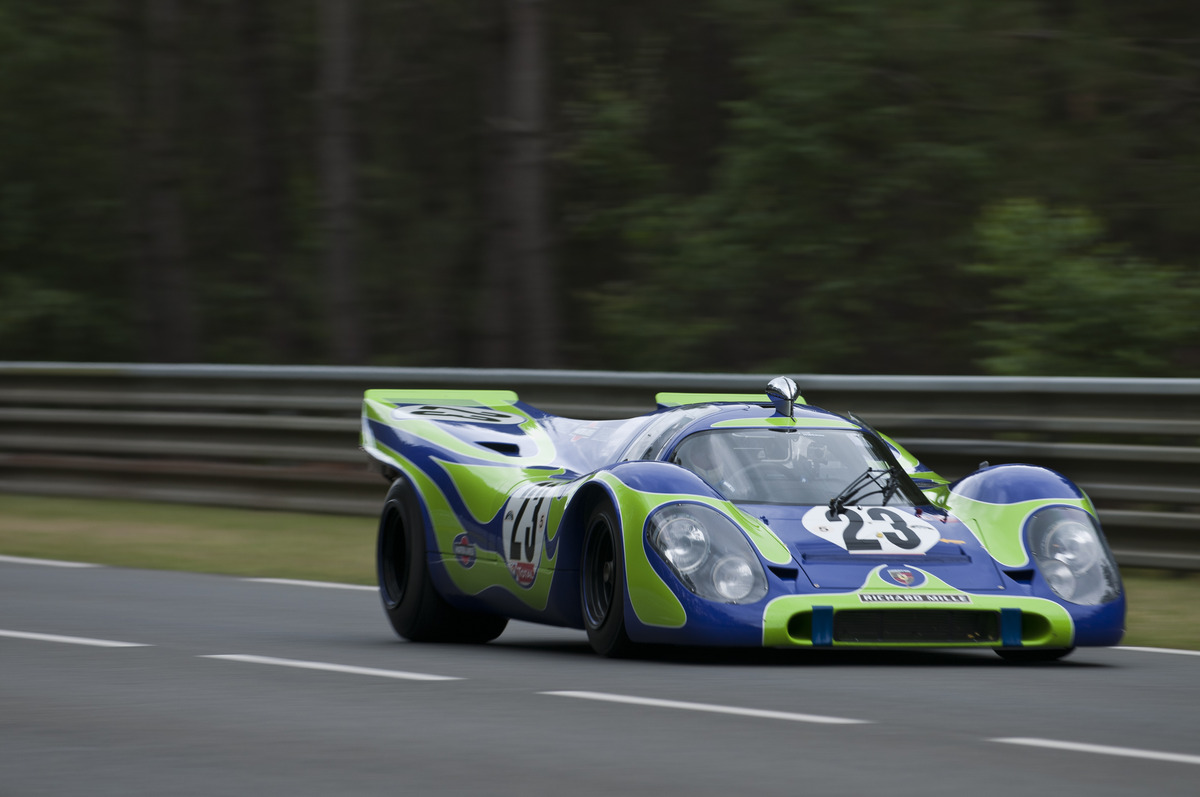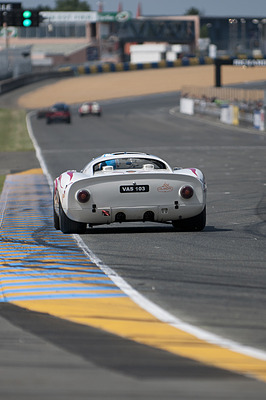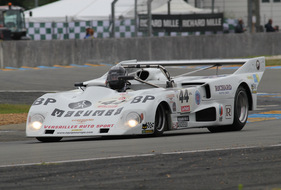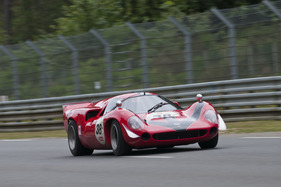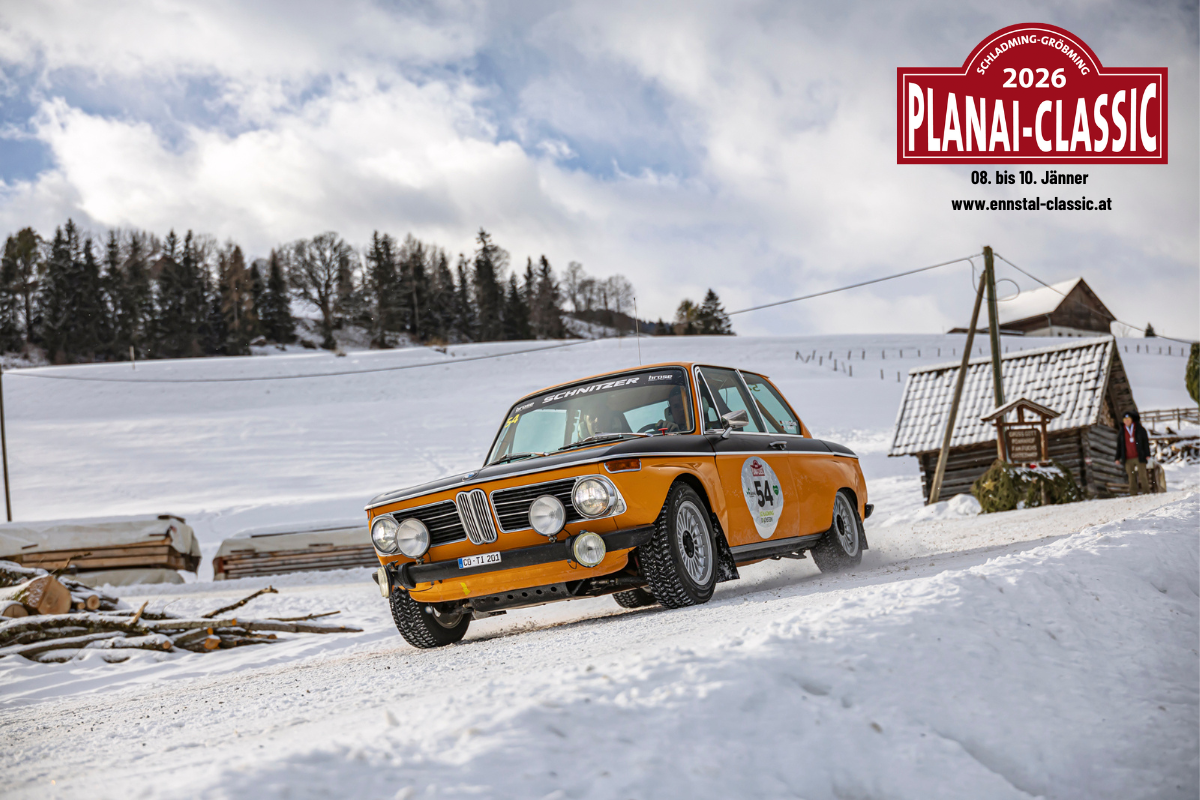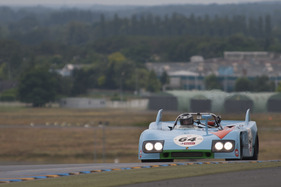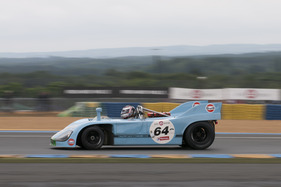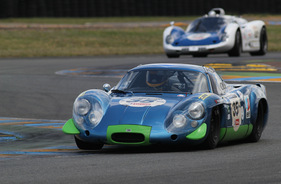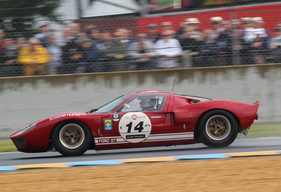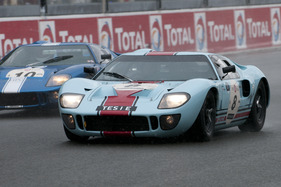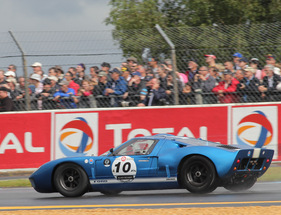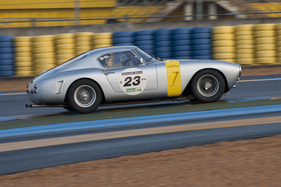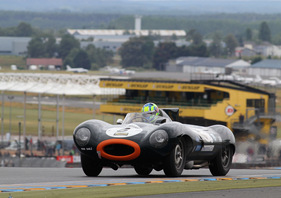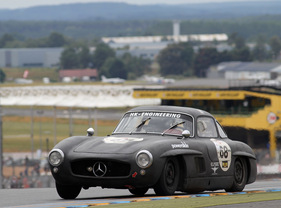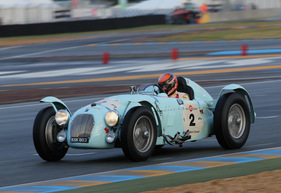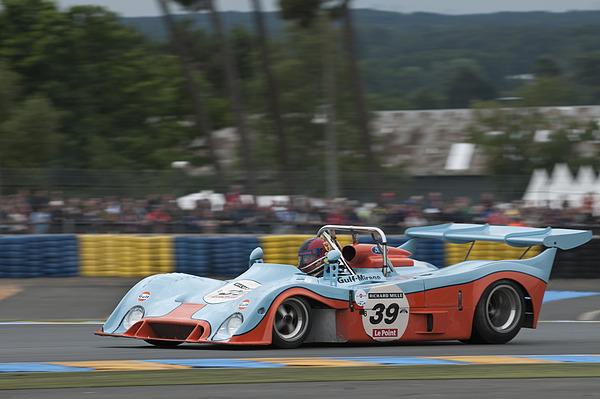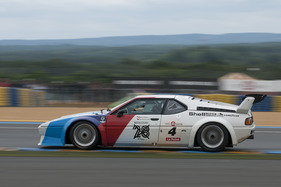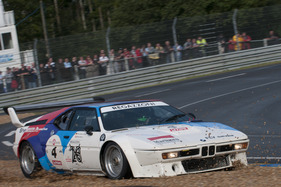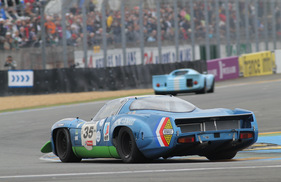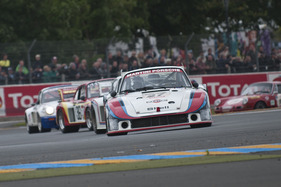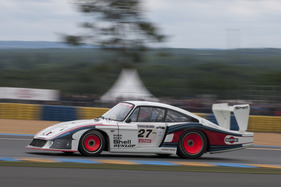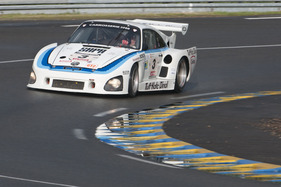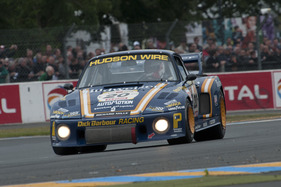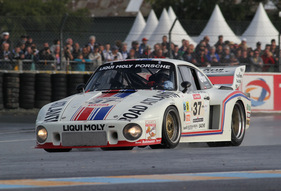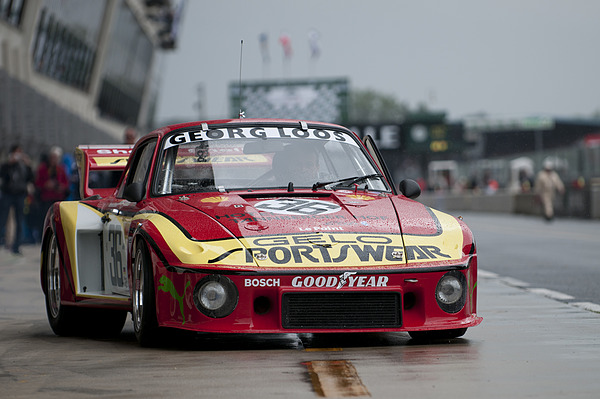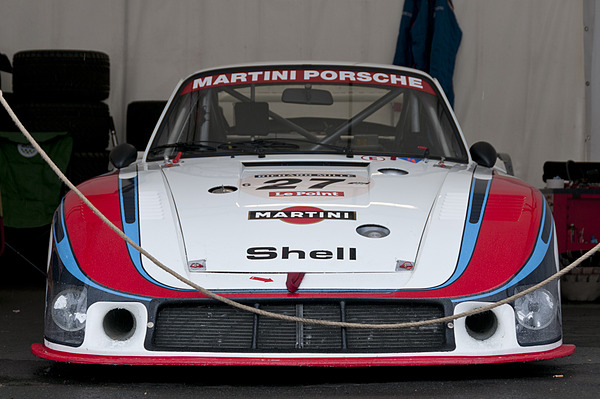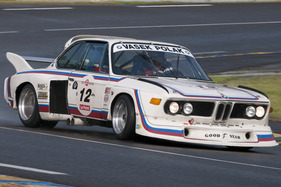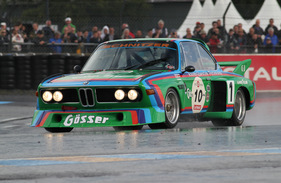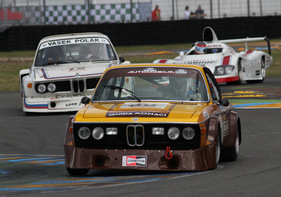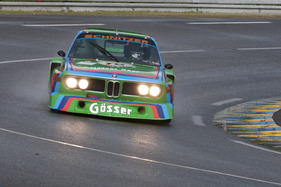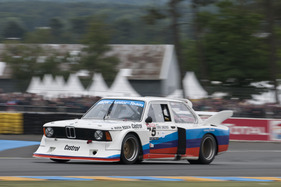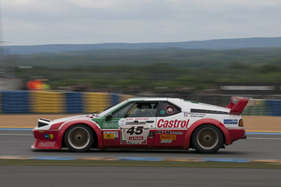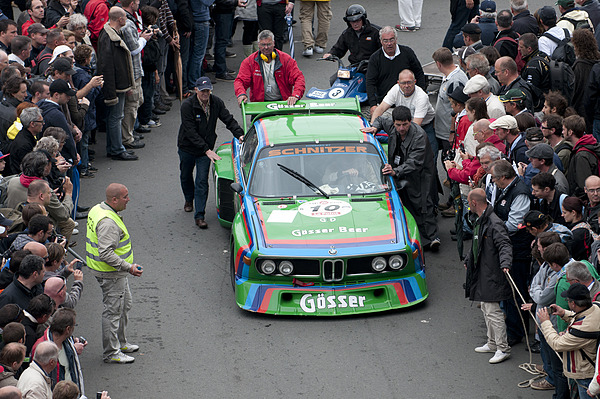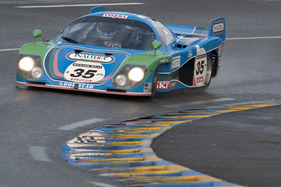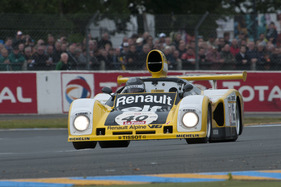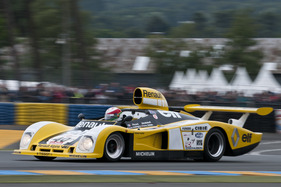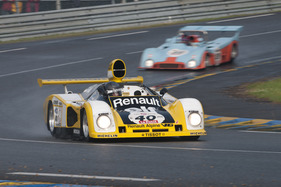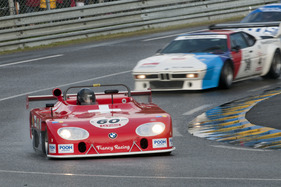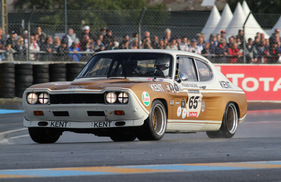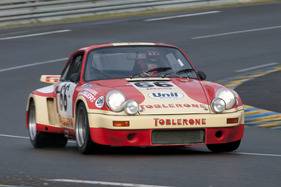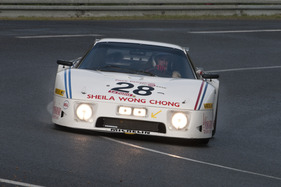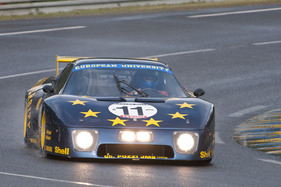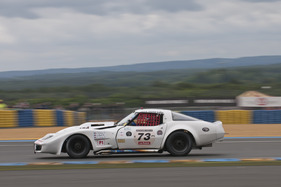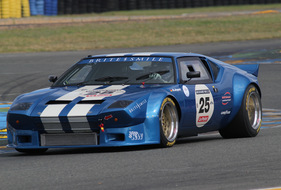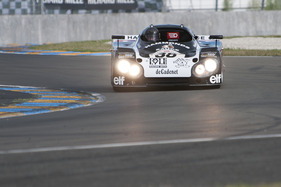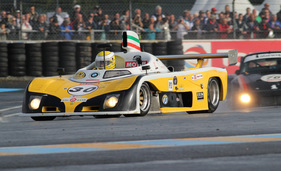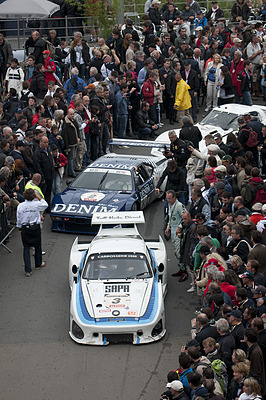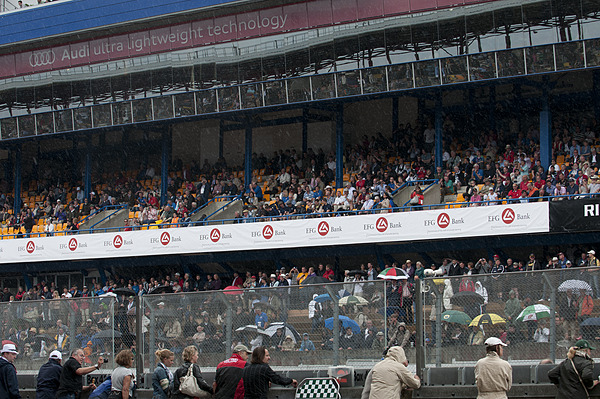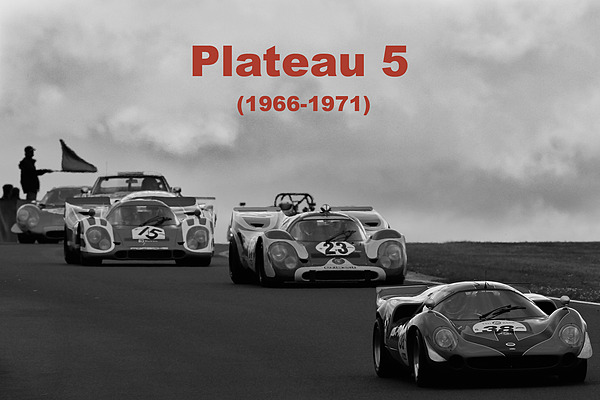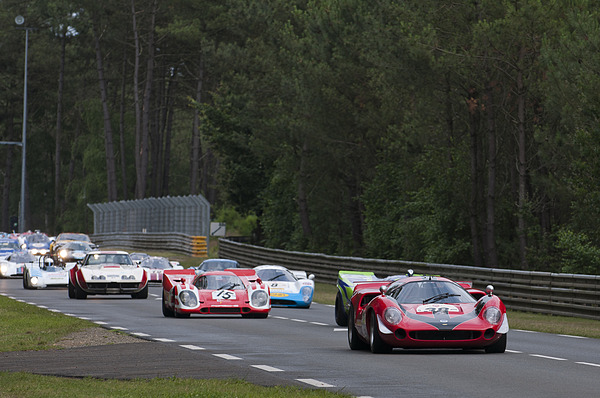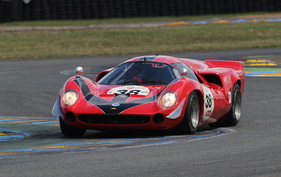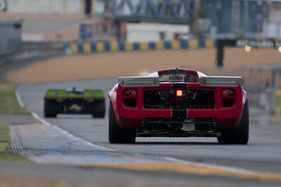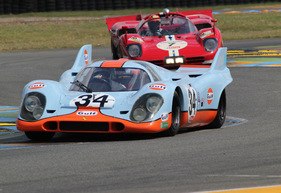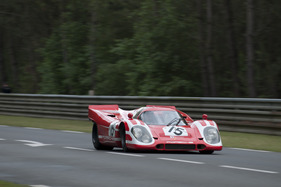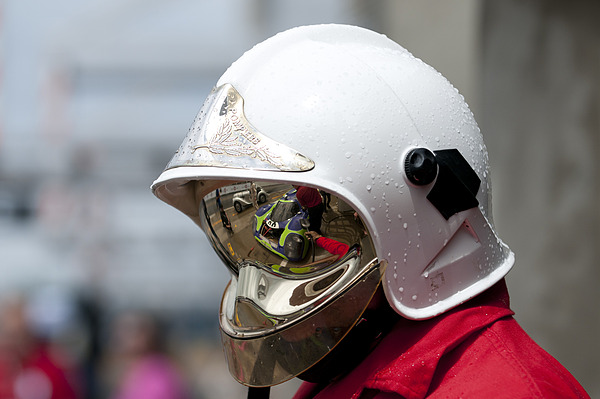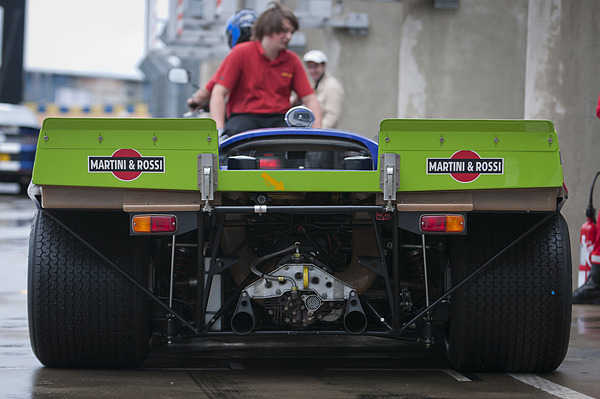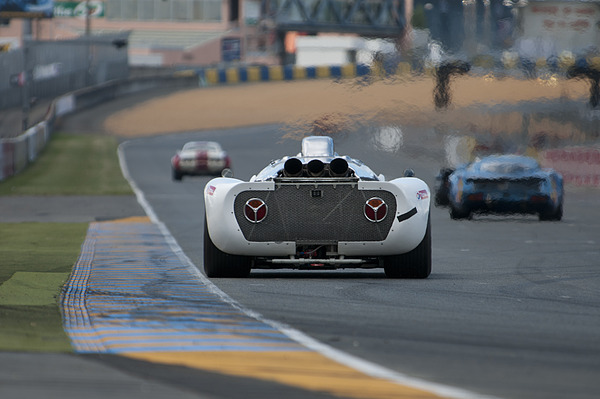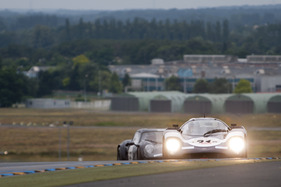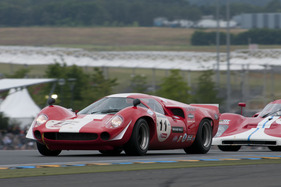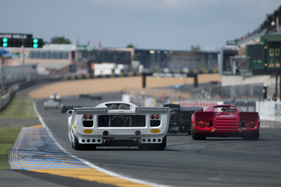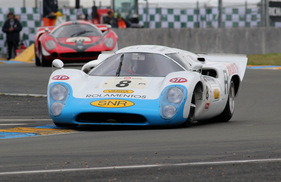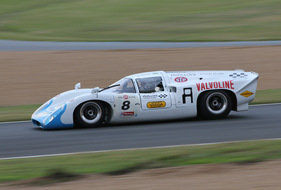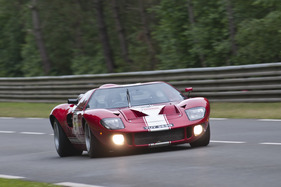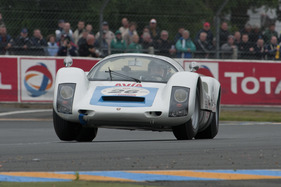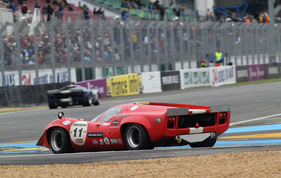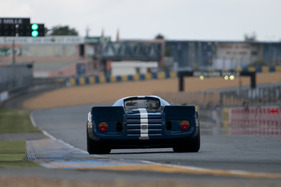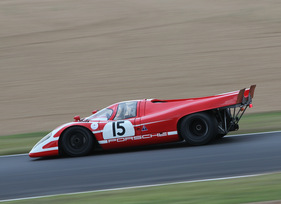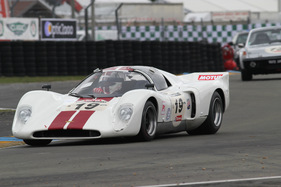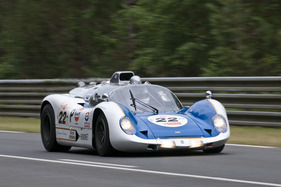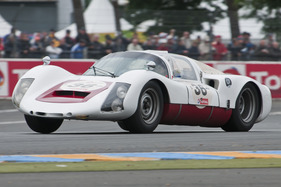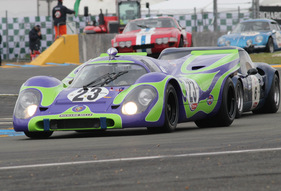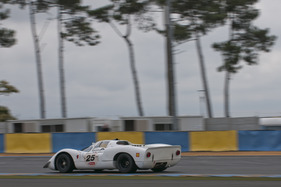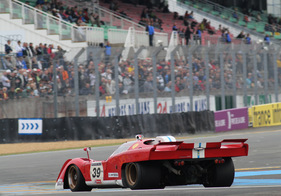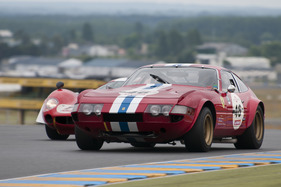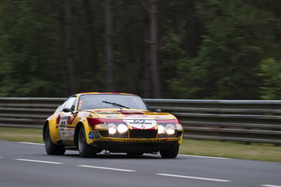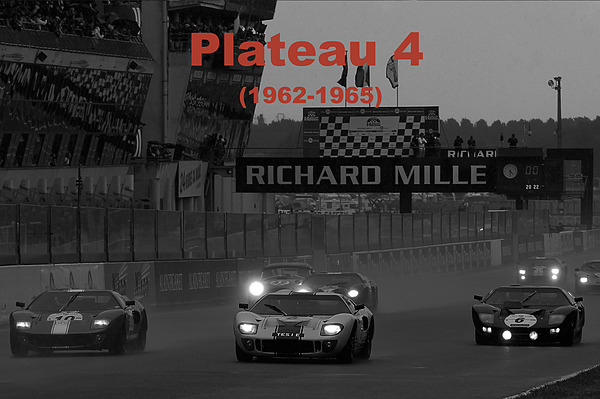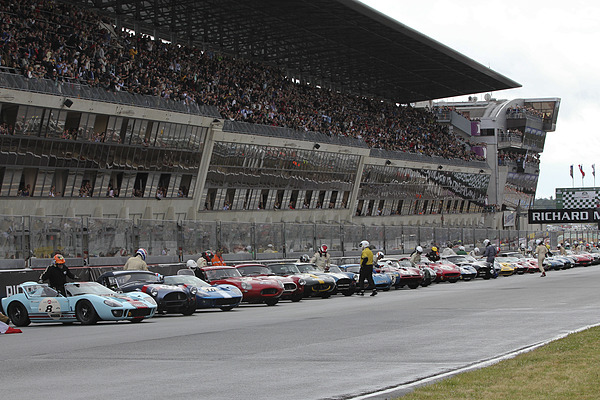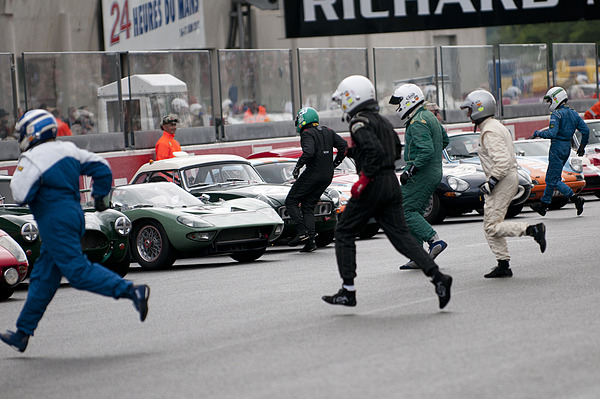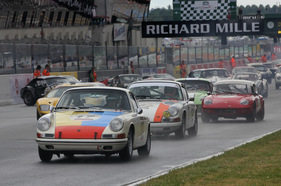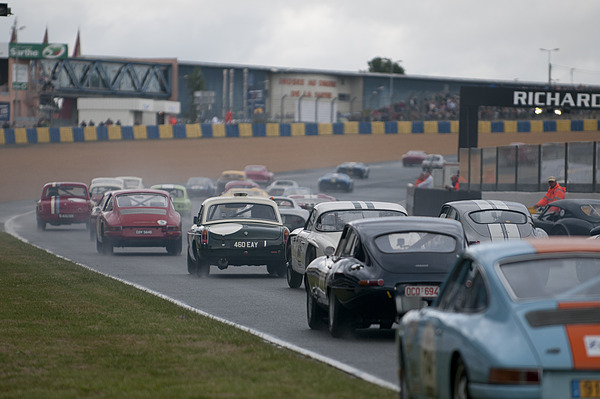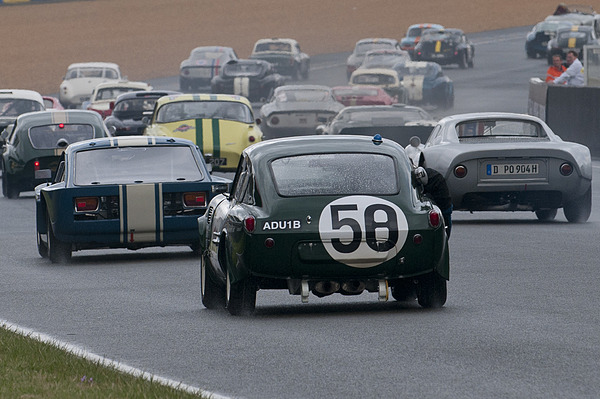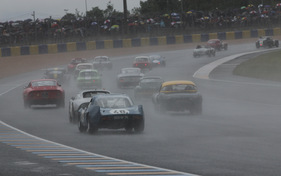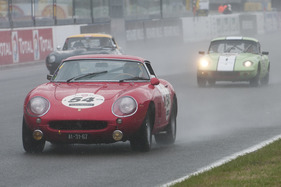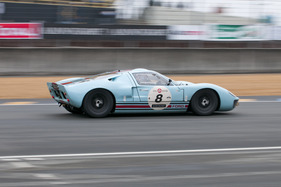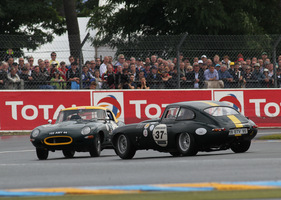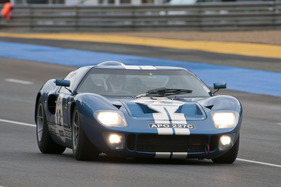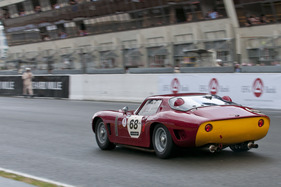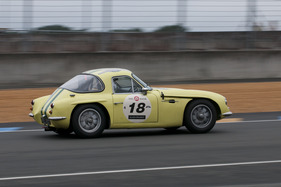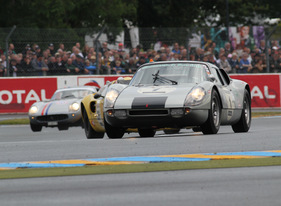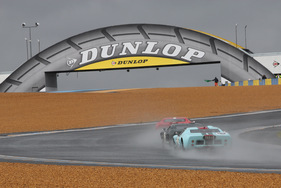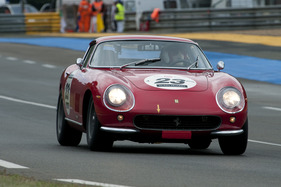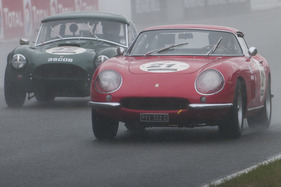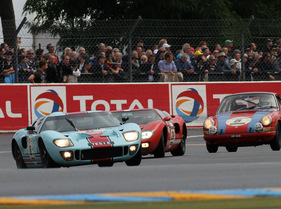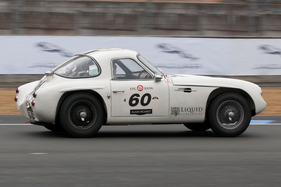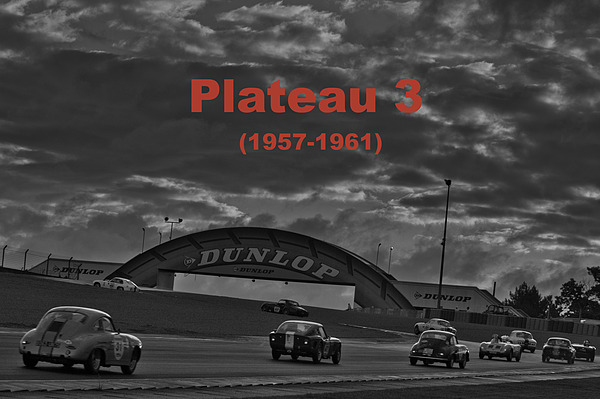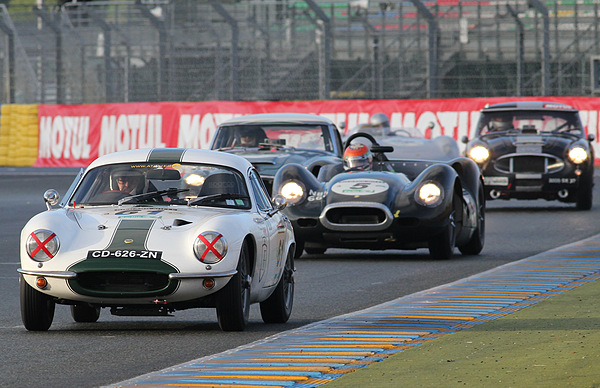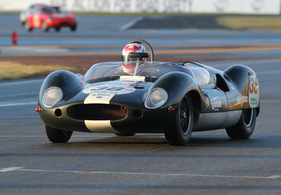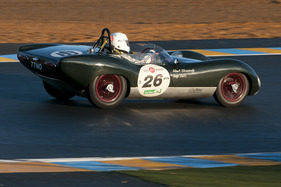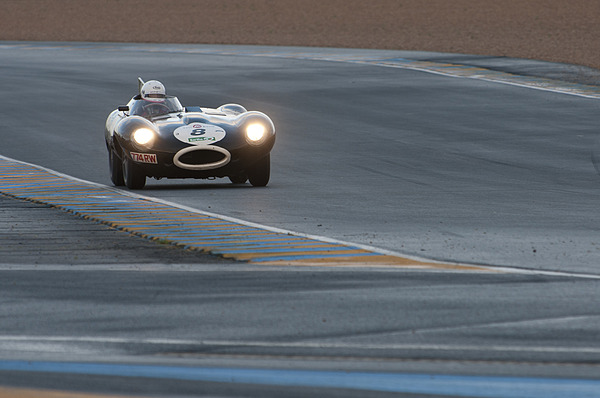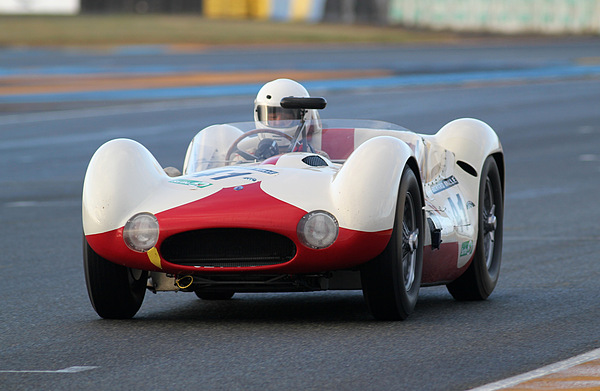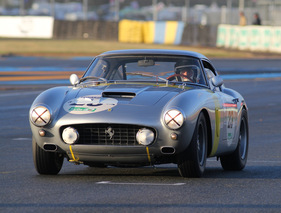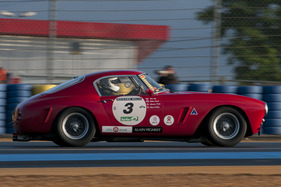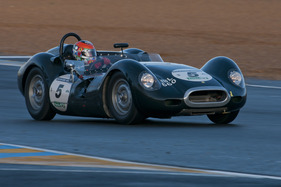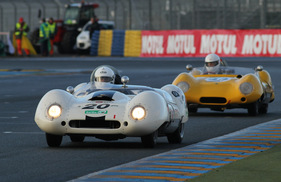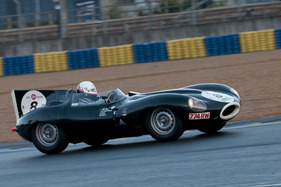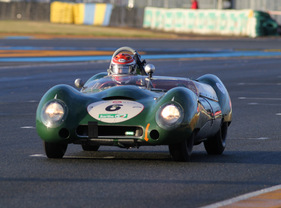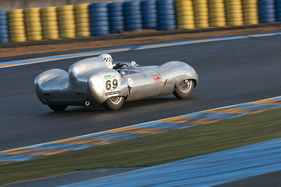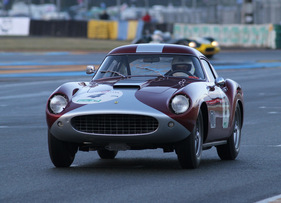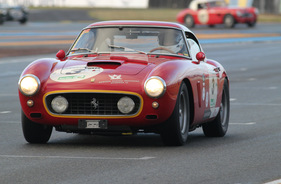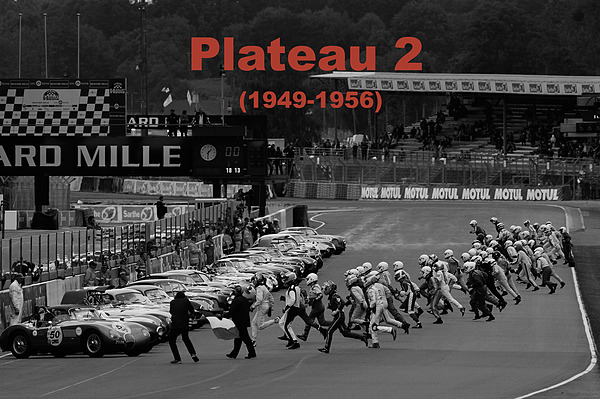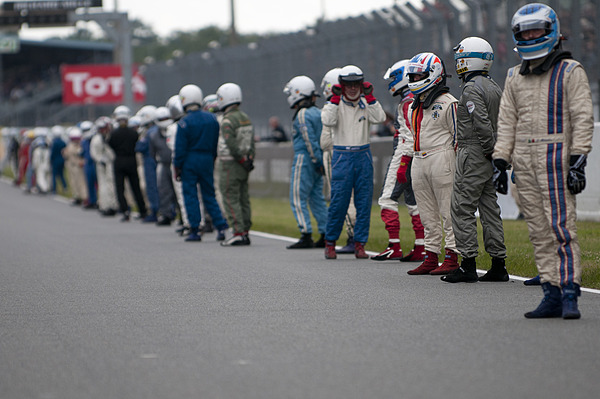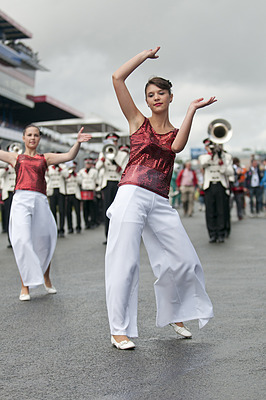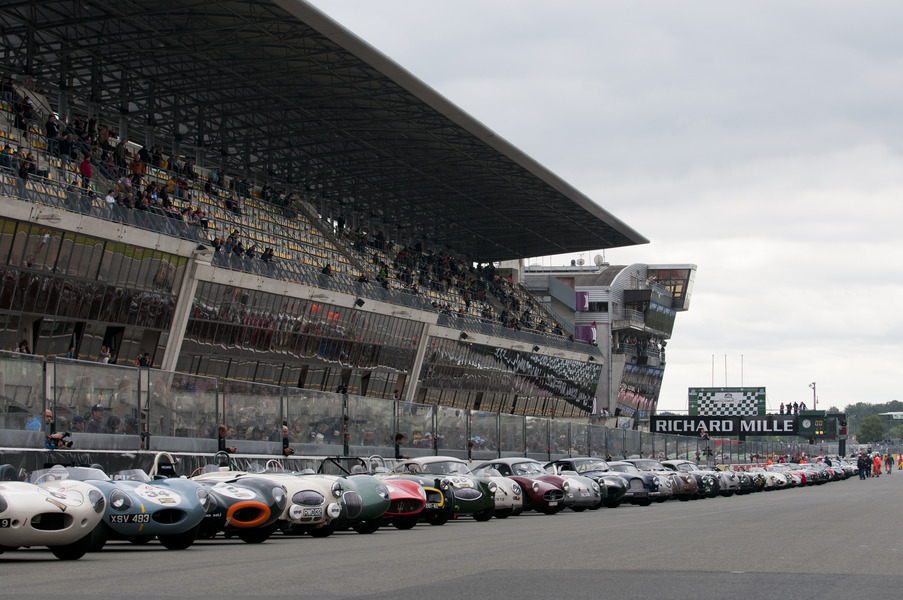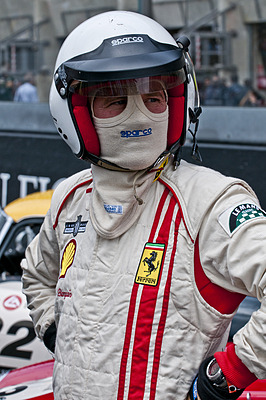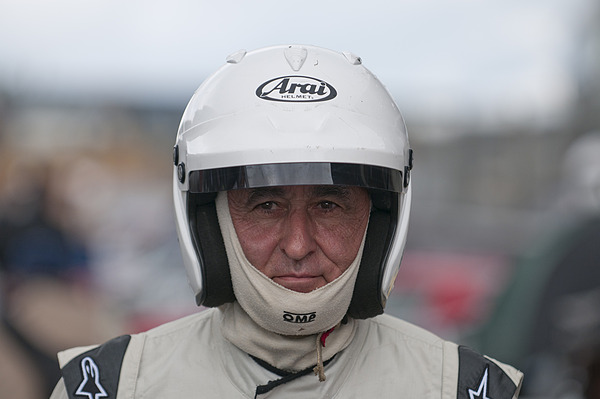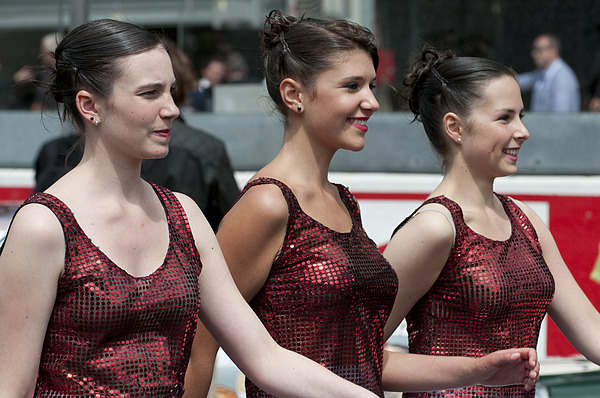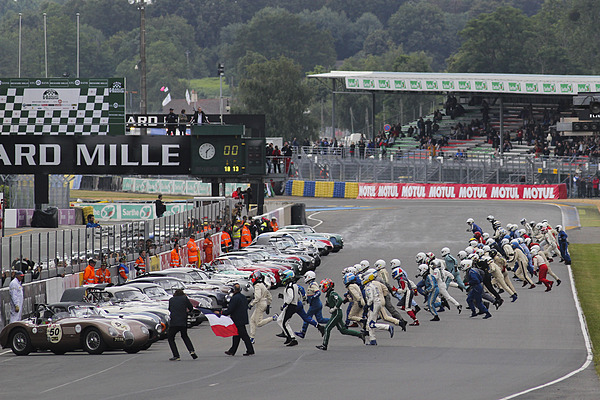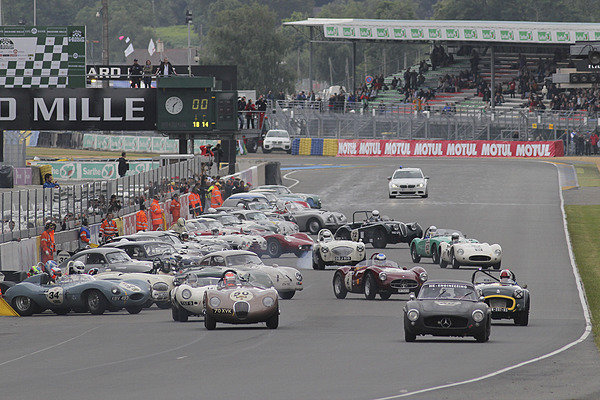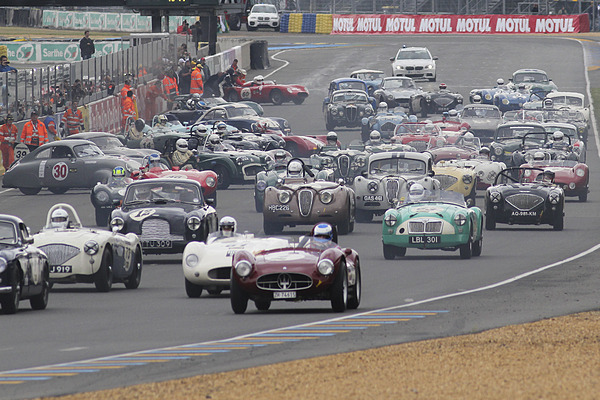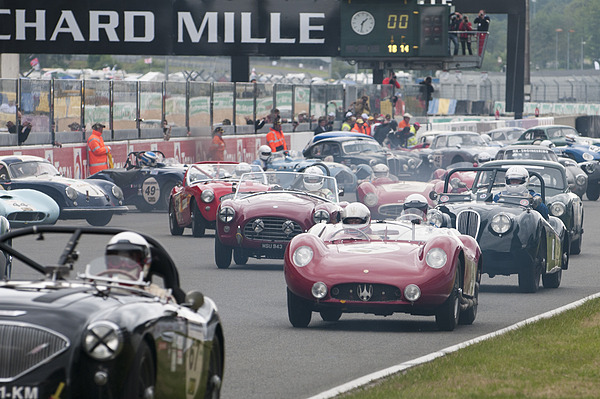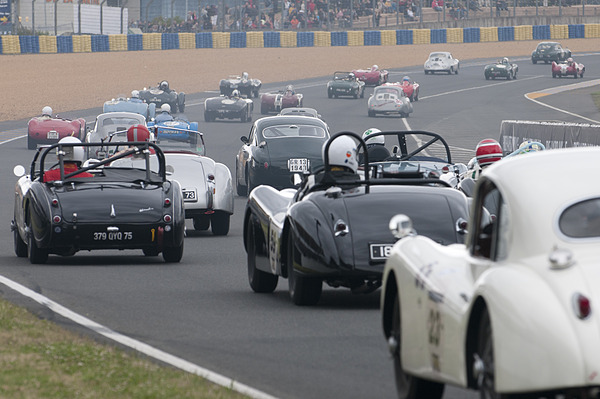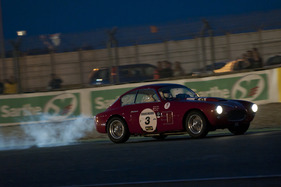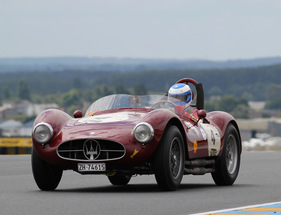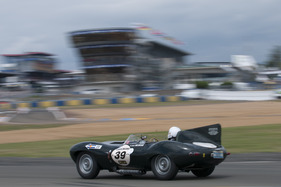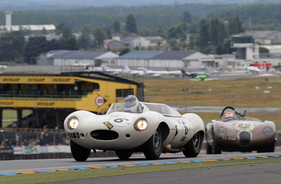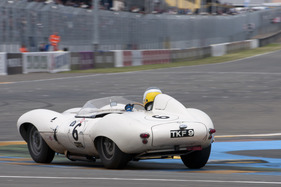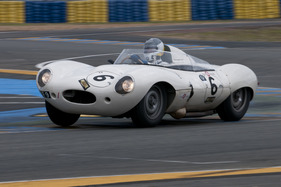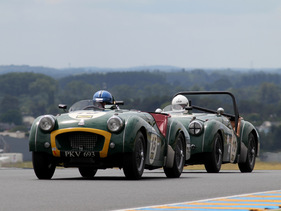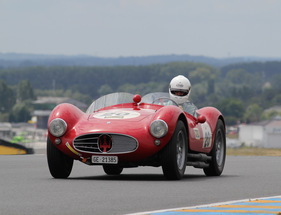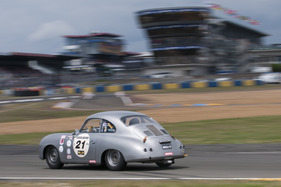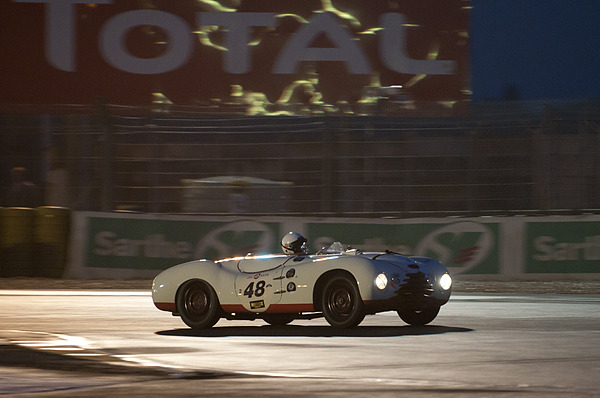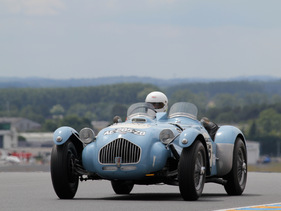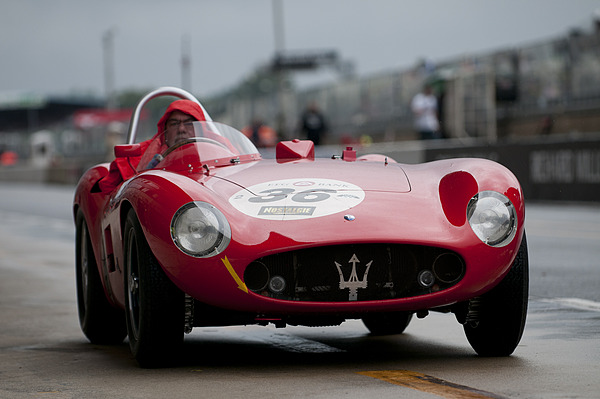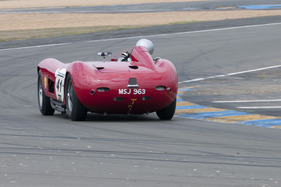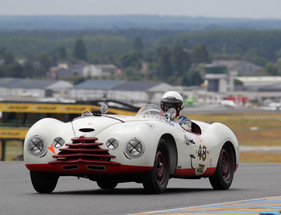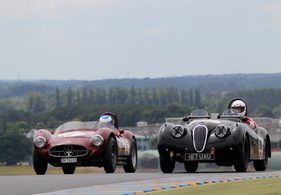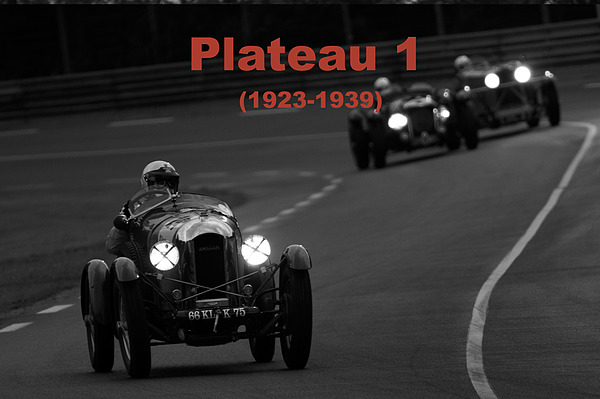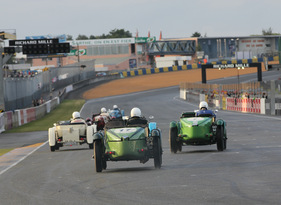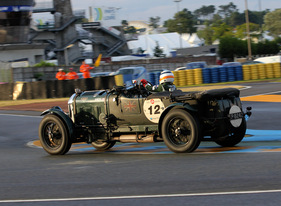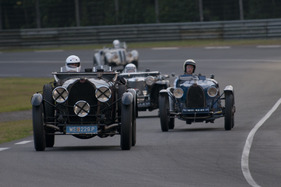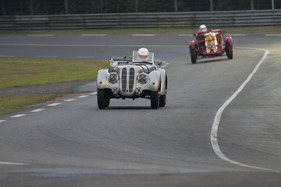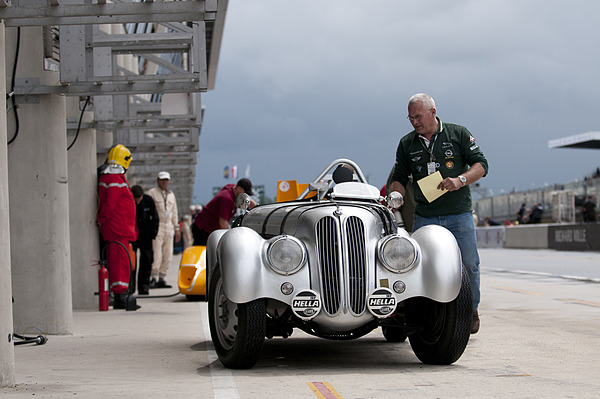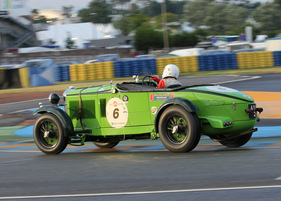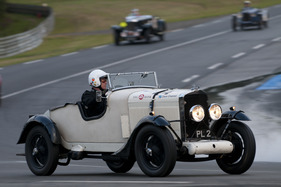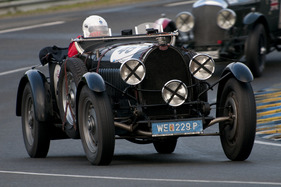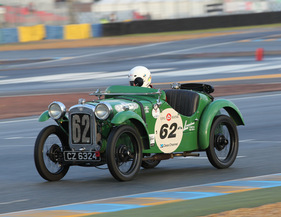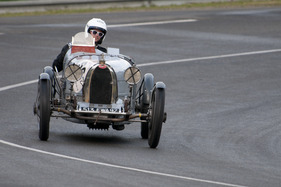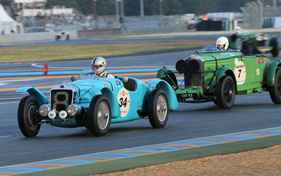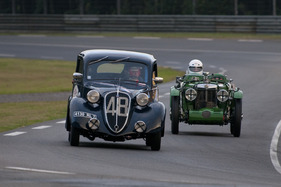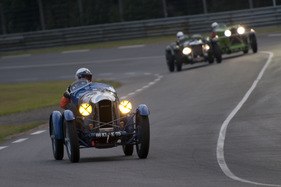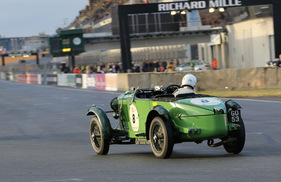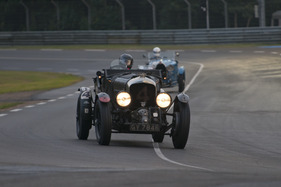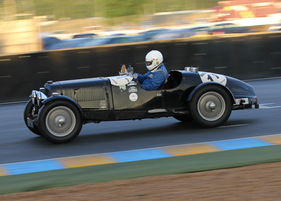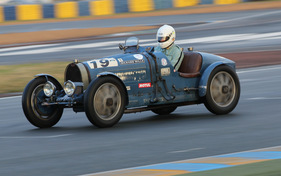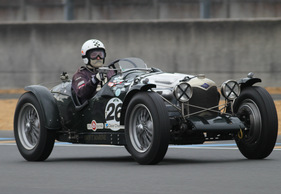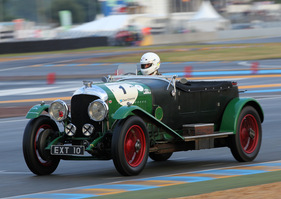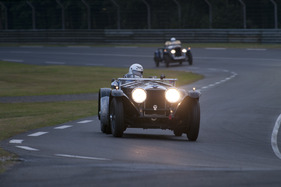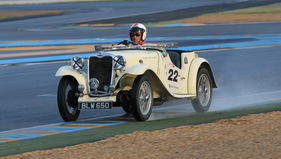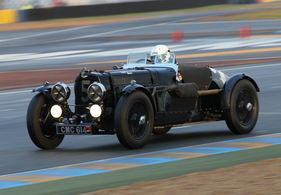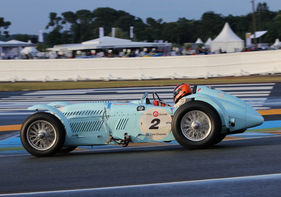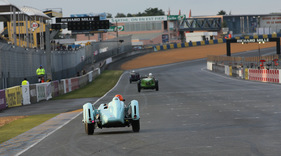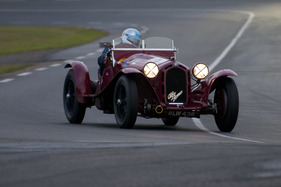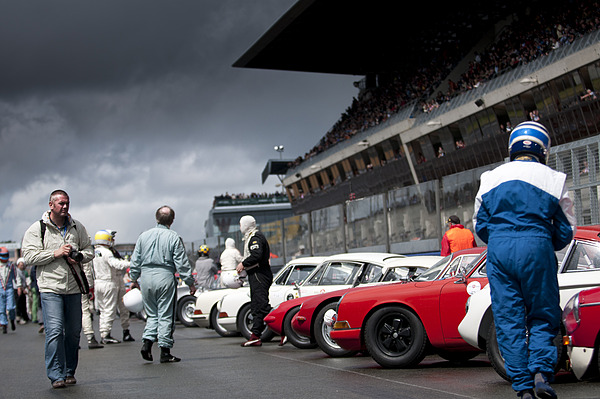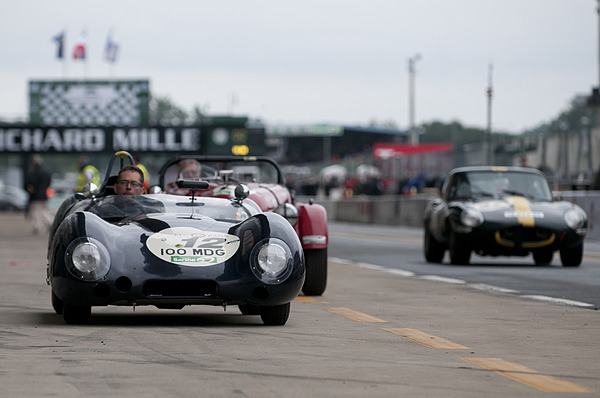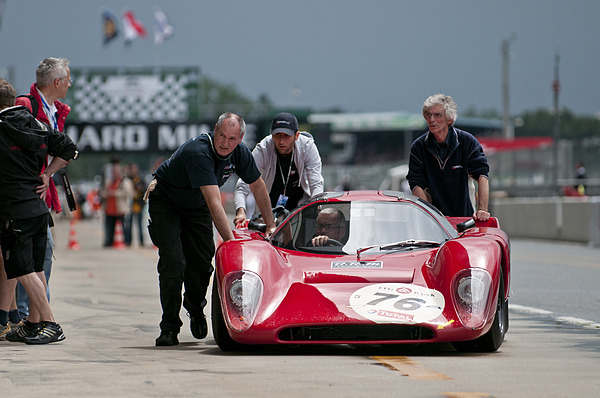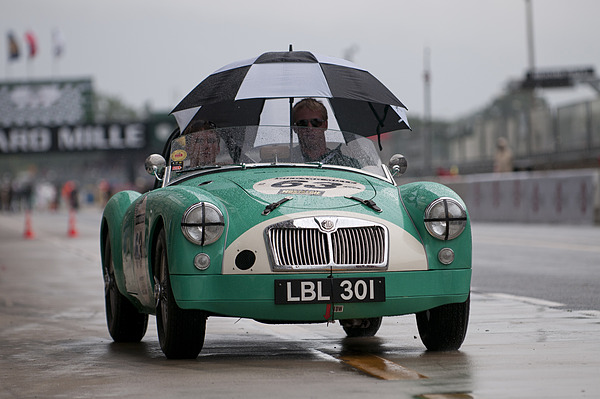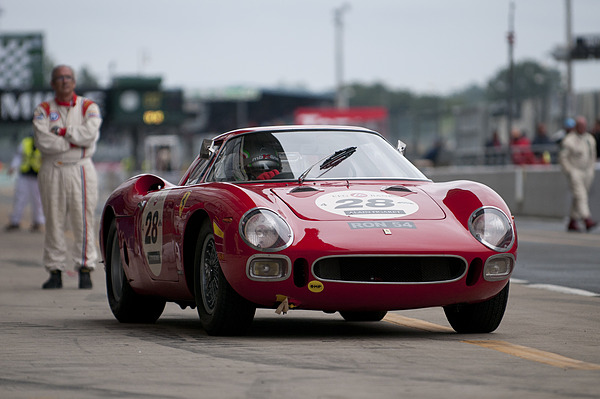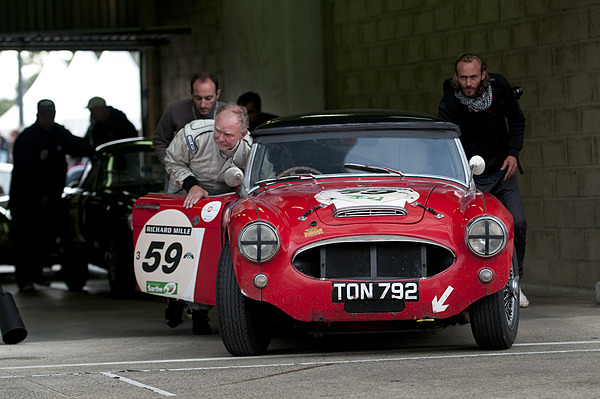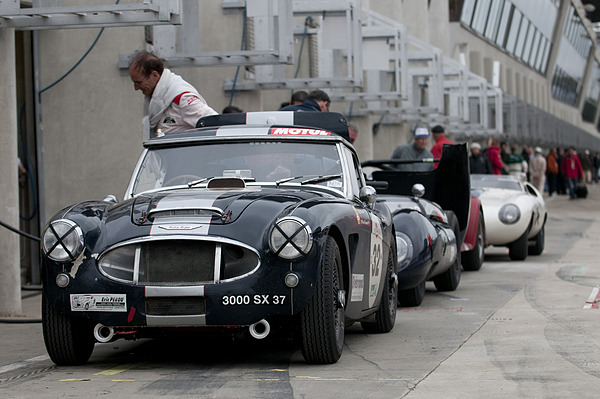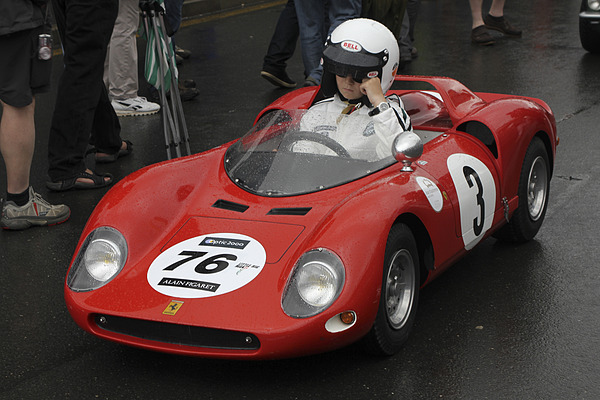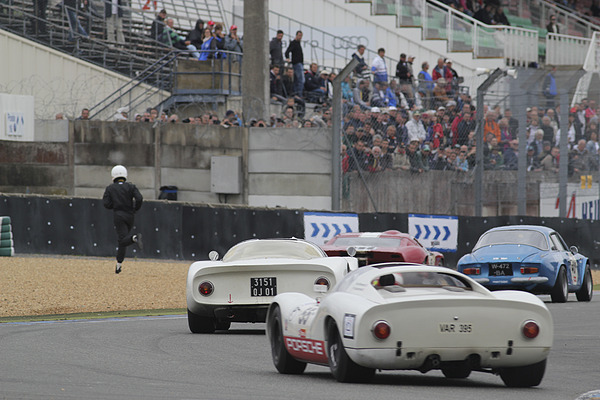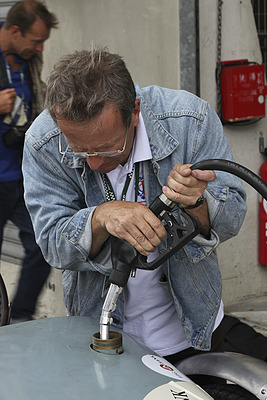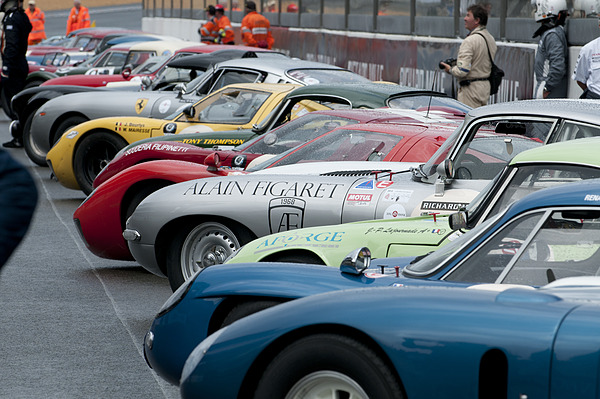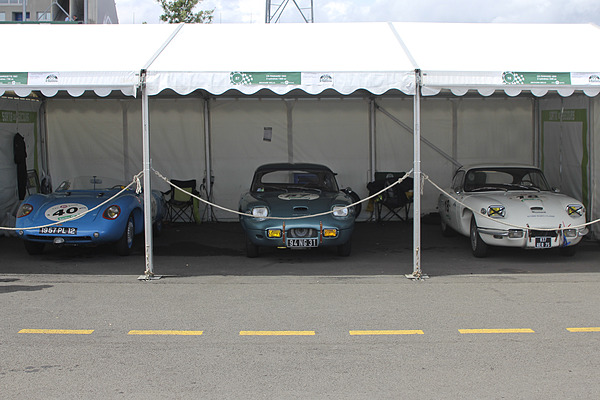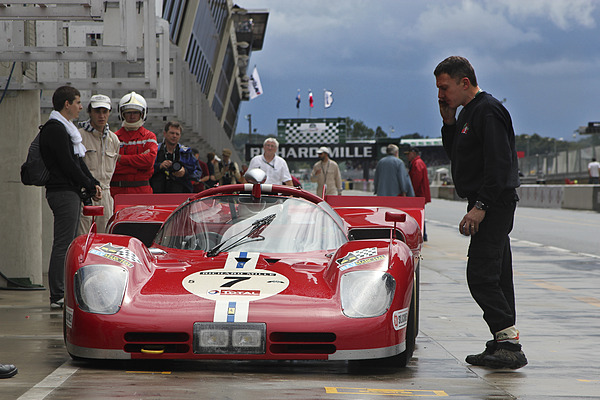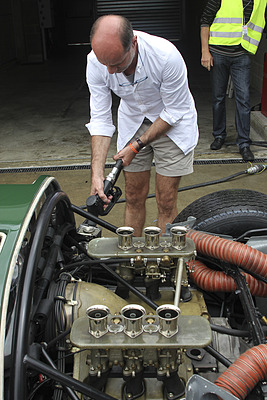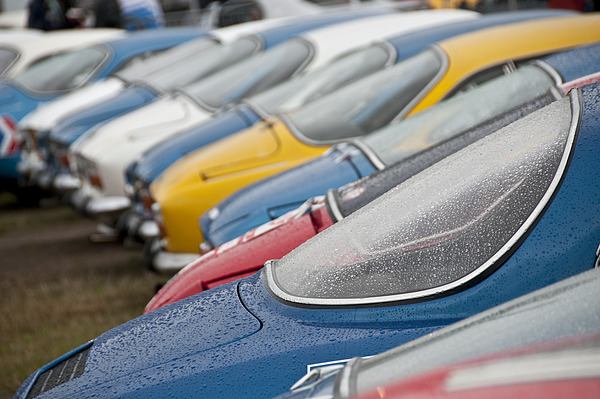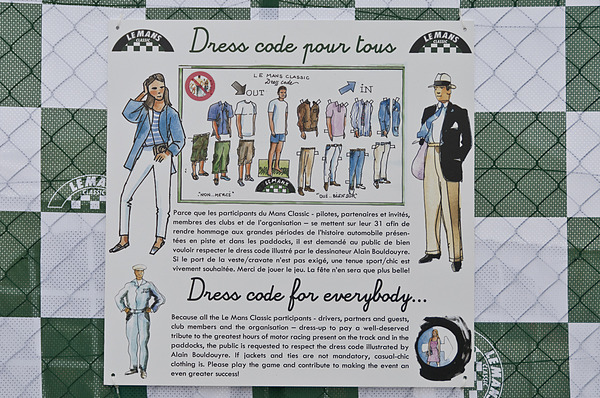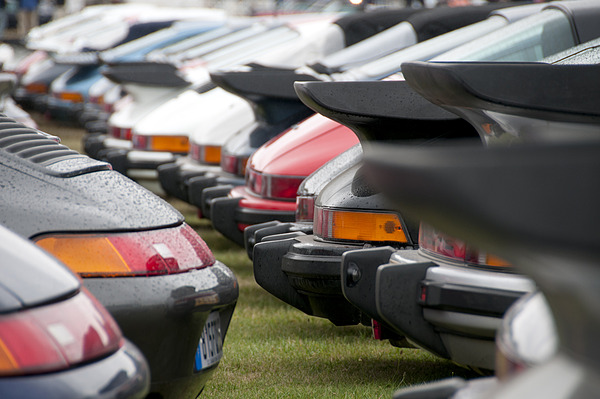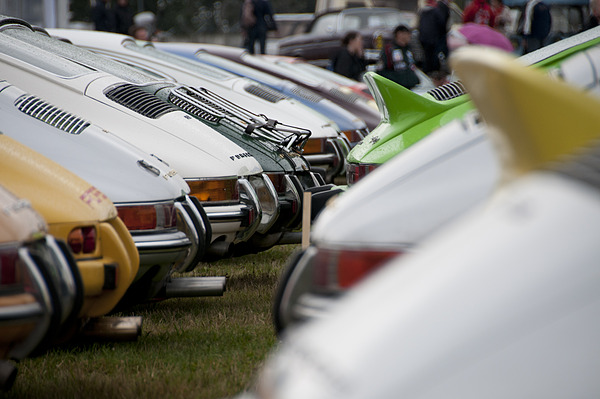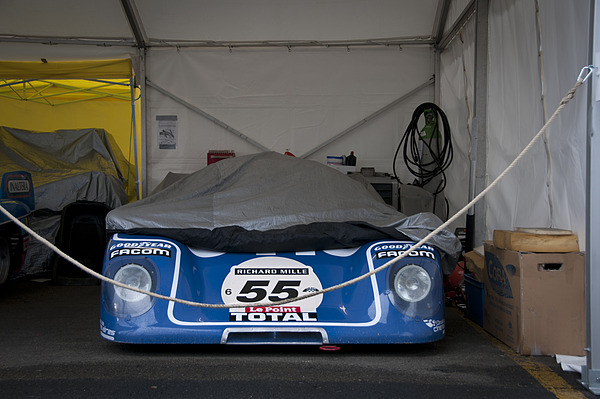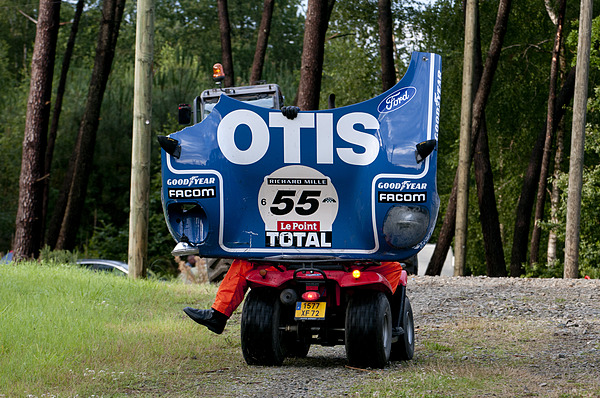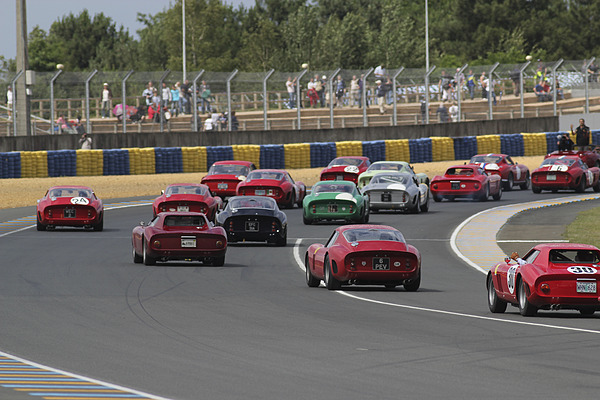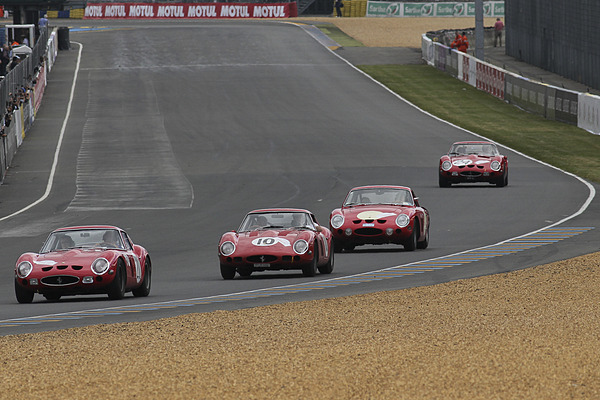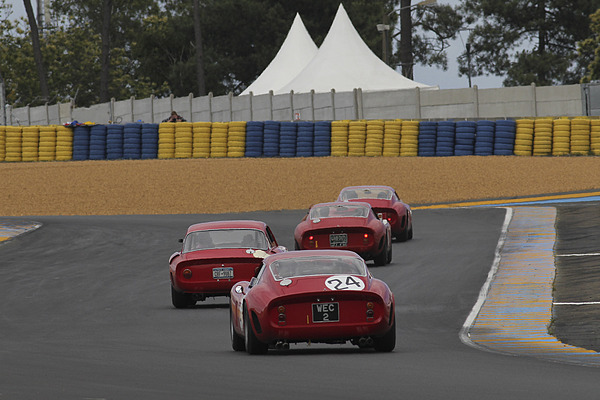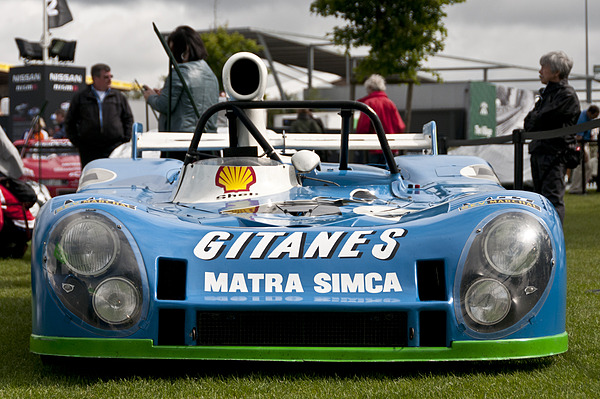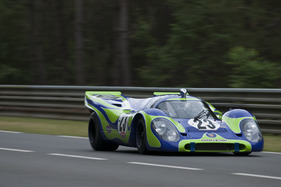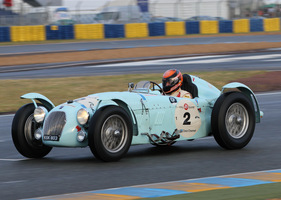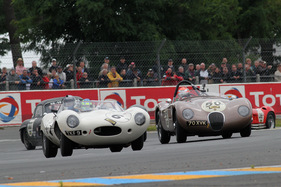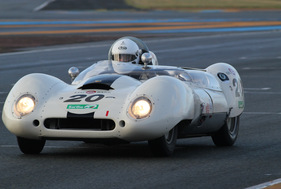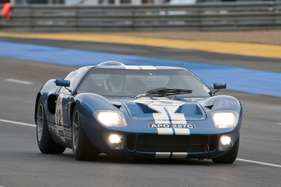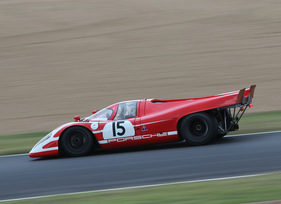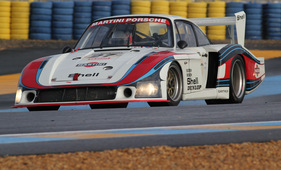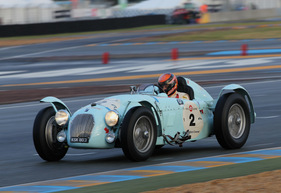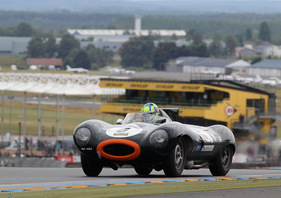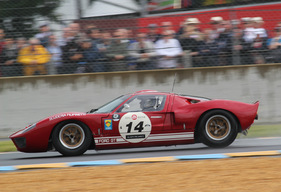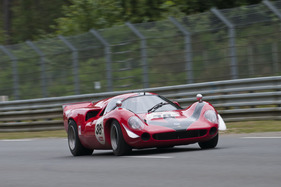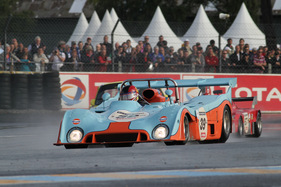Anyone who has seen the movie "Le Mans" by Steve McQueen probably had a deja vu experience at this year's Le Mans Classic. There it was again, the tadütadü that could be heard in the pits and which was able to drown out the engine noise. Only the shrill bell that used to announce accidents at Le Mans was missing, thank goodness. However, the cars of yesteryear thundered down the Hunaudières straight as they once did - above all the Gulf-Porsche 917 and the red Ferrari 512 M.
The Le Mans Classic brought the old days back to life. Races with cars from six eras thrilled the 109,000 spectators who had found their way to the Sarthe despite the inclement weather.
One of the really big events
The Le Mans Classic is a real treat for fans of historic racing. It is a hands-on event and a feast for the senses. Hardly any other historic racing event can look back on such a rich history as Le Mans, where a 24-hour race (and party) was held for the first time back in 1923. Even back then, the winners André Lagache/René Leonard covered 2,209 km in a Chenard & Walcker Sport, corresponding to an average speed of 92 km/h.
The organizers of the Le Mans Classic once again tried to put together a rich programme with many highlights around the six multi-part races - with success!
Ferrari 250 GTO class reunion
38 Ferrari 250 GTOs were built between 1962 and 1964, and the Gran Turismo, which was designed for racing victories, won the GT category of the 24 Hours of Le Mans twice and also achieved excellent overall placings. To celebrate its fiftieth anniversary, the GTO Owners Club organized a "class reunion" on the occasion of the Le Mans Classic. According to the organizers, 23 vehicles were brought together - 60% of the original fleet. On Friday, the cars drove a few laps of honor and impressively demonstrated that even a classic car built in small numbers can come in a wide variety of forms. Together, they were probably worth well over 250 million euros, the vehicles that promenaded around the race track in colors other than red.
Brand clubs and the charm of the infield parking lots
As always, Saturday morning belonged to the one-make clubs (around 170) and the many classic car fans who had arrived with their 8,000 or so classic cars. For several hours, hordes of Alpine, Jaguar, TVR, MG, Triumph, Aston Martin, Ferrari and over 70 other brands were able to do a few laps of the famous Le Mans race track. Given the eagerness of the participants, it is easy to understand why there were minor accidents and bumps.
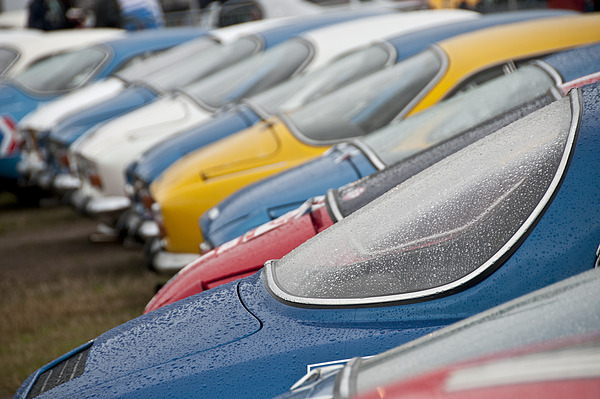
The parking spaces in the "infield", which were organized by brand, were also impressive. It is rare to see large collections of rare cars such as the Alpine A110 (around 200) and the early Porsche models were on display in almost the entire range of colors available at the time. The Fédération Panhard won an award for its presentation celebrating twelve years of presence at the 24 Hours of Le Mans, while other prizes went to the Iso Rivolta Club, the Riley Register, the Bentley Owners Club and the Talbot Owners Club.
Judging of Le Mans legends
The Le Mans Heritage Club had come up with something special: a jury awarded prizes to particularly impressive and well-preserved Le Mans cars from the past. The "Prix d'Excellence" was awarded to the Briggs Cunninghams Cadillac "Le Monstre" from 1950. Other special prizes went to the Matra MS 670, now celebrating its fortieth victory, the Bentley Embiricos, the Ferrari 250 TR and the Alpine A220. The class winners were the Tracta, Gordini 18 TS, Sunbeam Alpine, Ford GT 40 MkIIB (chassis 1047), Rondeau M378 (took part in Le Mans 10 times!) and Pescarolo C60 Hybrid. The vehicles could be viewed in a special exhibition in the "infield" and one or two spectators even had the pleasure of hearing engine noises.

But there was also plenty on offer on the track around the races, a Mercedes-Benz SL delegation celebrated 60 years of the SL, and tributes were also paid to the recently deceased Carroll Shelby.
Racing cars are very popular at Artcurial
The French auction house Artcurial offered racing and sports cars in a tent in the infield. Some of the extremely rare classics were worth around nine million euros to bidders. A Ferrari 275 GTB from 1966 fetched the record sum of EUR 1,540,200 (including surcharges), a Peugeot Dal'Mat from 1938 changed hands for EUR 321,700 and a Messerschmitt KR 200 also found a new owner for EUR 33,400. At 210,900 euros, the hammer price for a Ferrari 250 GT from 1959 offered as a barn find and therefore unrestored exceeded the estimated price by double.
More details can be found in a separate report on the auction .
Racing in three parts
Six vehicle fields (called "Plateau" in French), organized according to time periods, each competed in three races at the Le Mans Classic. One of the three races, lasting a total of 2 hours 9 minutes, took place at night. A car can be driven by one or more drivers, one pit stop per race is obligatory and must last at least one minute and 30 seconds.
The race courses of all plateaus are described in detail below.
Le Mans and the weather
Many participants had probably hoped for dry and warm weather conditions, but things turned out differently. It was already raining during practice on Friday, and Saturday was characterized by heavy rain in places. Only the races on Sunday were able to take place in windy but largely dry conditions.
The constant weather changes provoked many spins and unfortunately also some cold deformations. On the whole, the accidents were mostly minor, not least thanks to the high safety standards of today's Le Mans circuit, although it has lost much of its former charm in some places.
Close finish in the pre-war class (Plateau/Grid 1)
Only 10 seconds separated the winners Christian Traber/Bruce Trenery in their 1939 Talbot Lago from J. Bronson/G. Burnett/R. Evans on the 1934 Talbot 105, although it had originally looked like a victory for G. Burnett/R. Evans/A. Ames in another 1934 Talbot 105, as this team had dominated practice and the first race on Saturday evening. R. D'Ieteren/J. Lamsand finished third in an Alfa Romeo 8C from 1935.
Christian Traber was overjoyed with his overall victory and explained his less than ideal position in the second race:
"I had previously driven the night race in the Porsche 935 (Plateau 6) and immediately switched to the Talbot afterwards. However, as the field had already left the pre-grid when I arrived at the bottom, I had to start last and already lost a few minutes on the front runners at the start. And as it was still wet, I couldn't ride flat out to make up time. However, as you ride on the same tires on Plateau 1 in both dry and wet conditions, the conditions were the same for everyone. It was just damn slippery on the wet track, especially on the long straights with the huge fountains of water behind the tires."
The field included cars from 1925 to 1939, dominated by the Bugatti, Lagonda, Bentley and Talbot brands, spiced up with sports cars from MG, Morgan, Rally, Salmson, Riley, Lorraine Dietrich, Aston Martin, BMW, Invicta, HRG, Delage, Singer, Delahaye, Lombard, Citroën, Stutz, Chrysler and Amilcar.
There was a lot of speed and the drifts in the tight bend combinations were well worth seeing. A particular delight for the audience was the 1938 Simca 8 Spéciale Camerano Le Mans, which stood out as a "limousine" among all the open-top sports cars.
The Jaguar D-Type wins again (Plateau/Grid 2)
As in 1955, 1956 and 1957, when the Jaguar D-Type won Le Mans, the field for the 1949 to 1956 model years was once again dominated by the legendary Jaguar sports car in 2012. G. Pickering won by a good 50 seconds ahead of the sister car of Monteverde/Pearson/Smith, although after the first two races it had looked like A. Buncombe would win in the Jaguar C-Type, who was allowed to celebrate the Le Mans start to the last race in the lead.
Although six of the top ten finishers drove Jaguar cars, the field was very diverse. In the end, the best-placed Mercedes-Benz 300 SL of Mulder/Simon/Kleissl/Kleissl came in third, the best Austin-Healey was fifth, the fastest Aston-Martin DB3 was seventh, the fastest Triumph TR2 was 11th and the best-placed Porsche 356 was 13th. The final race was overshadowed by the massive impact of Franco Meiners' Maserati 300 S into the pit wall, as a result of which a safety car phase was necessary.
Lotus victorious in the 1957 to 1961 races (PlateauGrid 3)
The fact that the loudest racing car is not always the fastest was impressively demonstrated in the field of vehicles built between 1957 and 1961. If it had been purely based on sound aggressiveness, the Saab 93 from 1959 would certainly have achieved one of the top places.
Surprisingly, the winner was not one of the powerful vehicles with engines from Ferrari, Maserati, Aston Martin, Jaguar or Chevrolet, but a Lotus 15 driven by Wells/Twyman/Pirro. However, the Lotus 15 had already been able to beat Ferrari sports cars in the past, despite its small-volume engine, when the technology held up.
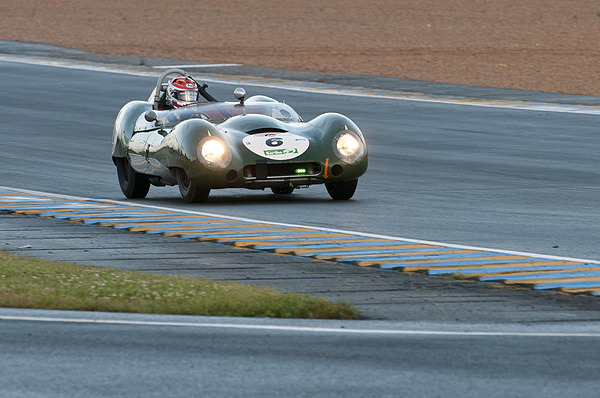
Behind the Lotus 15 was the Aston Martin DBR1 of Fisken/Leventis, which showed signs of the tough battle, with the Ferrari 250 GT SWB of Vincent Gaye in third. For a long time, it had looked like the beautiful Lister Costin Jaguar of Zak Brown would win the first two races. However, technical problems forced him to retire in the third race.
The field of vehicles was characterized by diversity, which also left room for rarities such as the DB HBR Barchquette, the Peerless GT or the Osca 1600 GTS Zagato.
Clear Ford GT 40 victory in the 1962 to 1965 class (Plateau/Grid 4)
The 1962 to 1965 class was a race for high-displacement sports cars, with three Ford GT40s with 4.7-liter engines holding their own at the front. Behind them, however, was a spirited Elva GT160 with a displacement of just 1.6 liters, an impressive performance. The next places were again taken by eight-cylinder sports cars of the AC Cobra, Iso A3/C and Ford GT 40 types.
Unfortunately, the winning cars of the years 1962 to 1965 were largely conspicuous by their absence, having become too expensive and too valuable in the meantime.
Reliability pays off in the 1966 to 1971 class (Plateau/Grid 5)
The racing field of sports cars and prototypes from 1966 to 1971 probably brought the audience back to the past the most, as there were many famous sports cars with real Le Mans history on the starting list. There were three Porsche 917s, severalFerrari 512 Ms, three Alfa Romeo 33s and a number of Lola T70s, as well as other cars from Porsche, Ferrari, Chevron, Ford, Chevrolet, Alpine and Lotus. One highlight was certainly the Howmet TX with gas turbine. The Howmet roared past like a helicopter taking off when the engine was revving at over 40,000 rpm. Unfortunately, this revolutionary racing car did not make it into the third race, retiring during the night.
While all the Porsche 917s retired, the Lola T70 Mk II of Swiss driver Bernhard Thuner held on to win by a clear margin. The fastest Porsche 917 from Attwood/Schuppan did not complete a single race lap, but the other two did make it into the first and second races respectively. The Ferrari 512 M was also unable to shine, meaning that the Porsche 908/3 of Goethe/Giroix and the Alpine A 220 of Sepak/Bourdin finished on the podium.
Acoustically, this field was certainly one of the most interesting, as there were various engine concepts (reciprocating piston engine, Wankel engine), displacements and cylinder numbers from 4 to 12 at the start.
Mixed field of the latest racing cars (Plateau/Grid 6)
Porsche was one of the dominant Le Mans winning car manufacturers and the 936, a former Le Mans winner, was also on the grid. A horde of 935s and 911s rounded off the Porsche field. Surrounding them were several Ferrari 512 BB/LMs, a De Tomaso Pantera Group 4, a handful each of BMW 3.0 CSL and M1 Coupé, as well as sports cars from Cheetah, Lola, Chevron, Osella, Mirage and Sauber. The GT fraction was complemented by several Ford Capri, two huge Dodge Charger and Ford Gran Torino and several Chevrolet Corvette. The exotic cars certainly included the Ligier JS2, the Inaltera, but especially the Moynet LM, which took part in the 1975 24 Hours of Le Mans with an all-female crew (Christine Dacremont, Michèle Mouton, Marianne Hoepfner) and won the two-liter race.
However, it was not the favored Porsche that took home the victory, but the Gulf Mirage of C. Mac Allister, followed by the BMW M1 of the Hinderer/Stretton/Hinderer crew. Technical problems, driving errors and bad weather - for example, it started to rain heavily during the formation lap and not all cars were able to change tires in time because they had already passed the pit lane - pushed the fastest Porsche 935 and 936 in practice to the back of the field, as well as the beautiful De Cadenet-Lola, which had clearly won the first race.
Swiss driver Christian Traber was also unable to drive his fast Porsche 935 to one of the top places as expected, despite several impressive chases to catch up, because he was unlucky several times with safety car phases or was unable to change from slick to dry tires in time.
Index classification with surprises
The index classification takes into account not only the laps completed and times recorded, but also the year of manufacture and performance of the vehicles in order to give older and less powerful competitors a chance of finishing in the top places.
R. Emmerling won the index classification for pre-war vehicles in a Riley Brooklands, the winner of the 1949 to 1956 category was M. Hoble in a Triumph TR2, the 1957 to 1961 category was won by R. Wils/J. Twyman in a Lotus Elite and the 1962 to 1965 sports car category was won by L. Gahtercole/D. Gathercole in a Lotus Elan, P. Chau in a Ford Shelby Mustang GT 350 led the plateau with cars from 1966 to 1971 and M. Mahy and N. Engels in a BMW 2002 Heidegger won the trophy for the youngest racing cars from 1972 to 1979.
International field of participants
In keeping with tradition, the French made up the majority of the field with 195 drivers, followed by 120 British, 57 Germans and 38 Swiss. Some drivers traveled long distances from the USA, Brazil and even Australia.
Celebrities take to the wheel and the microphone
A whole host of former Le Mans winners were on hand at Le Mans, Derek Bell took the wheel of a Bentley 4.5-liter pre-war racing car, Jean-Pierre Jassaud drove an Alpine A442B, in which he won Le Mans in 1978! Richard Attwood and Vern Schuppan showed their class in a Porsche 917 until they retired, but a whole host of "modern" racing drivers also paid their respects in old racing cars, including Yvan Muller, Emanuelle Pirro, Eric Hélary and the charming Swiss driver Natacha Gachnang.
And those celebrities who couldn't drive themselves spoke into the microphone, like Vic Elford, or waved the starting flag like Jean Todt.
No boredom - entertainment around the clock
The Le Mans Classic was once again a unique event, similar to the "modern" 24 Hours, this year's event was run around the clock from Saturday to Sunday. During the night, a nightclub provided additional entertainment, with the races following at short intervals. Three of the six "grids" were sent on their way with a Le Mans start, a spectacle that thrilled both spectators and drivers and is certainly part of the appeal of the event.
